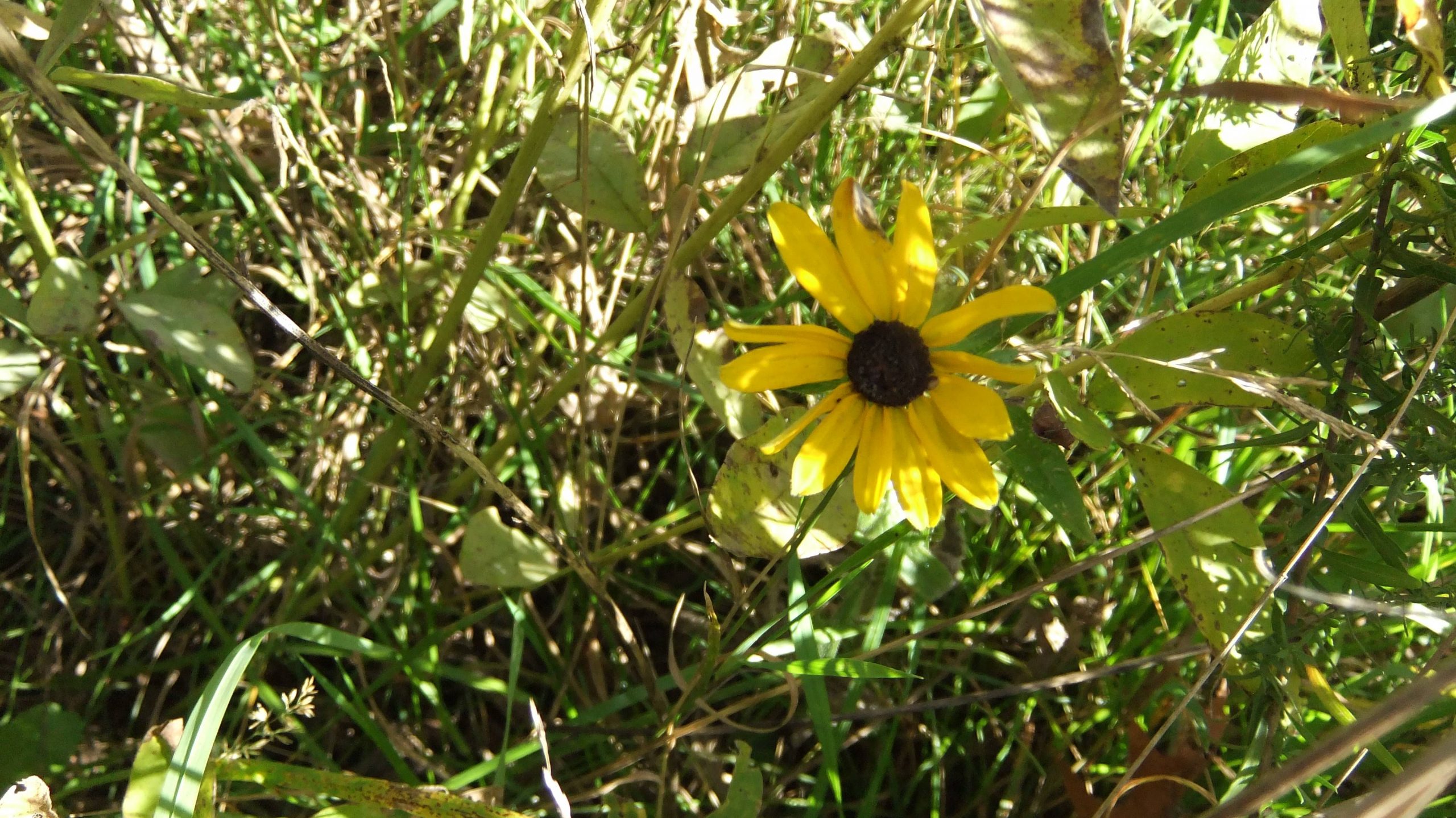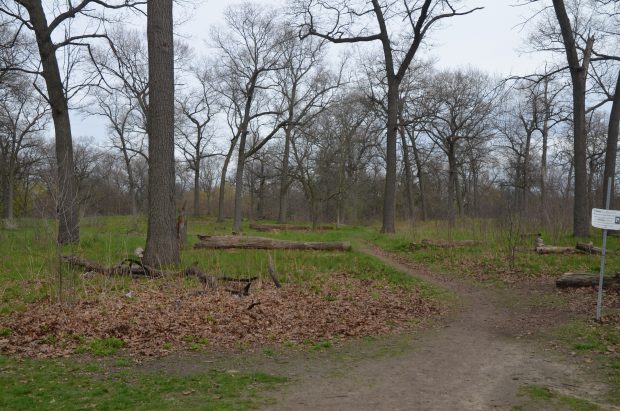To see the High Park 360 tour, go to the Storymap: https://storymaps.arcgis.com/stories/9258ba57273a42998d53935ac85ec433
[Old content, below, Pilot version of Tour Introduction]
Introduction:
Oak savanna*, tall grass prairie and other relictual Midwestern habitats – where only small stands of once-vast habitats remain – are considered globally imperilled, rarer, in fact, than many iconic tropical habitats. Oak savanna, for example, with its well-spaced bur oaks and lush herbaceous undergrowth, was more or less resurrected from the dead (fittingly, the last remaining exemplars of this habitat were often found in old cemeteries). So rare had some of these ecosystems become that protection alone would never be enough; these natural areas needed active resuscitation. Heneghan, Liam, 2020, Aeon Magazine
* Savanna is a transitional zone between prairie and woodland that contains a mixture of woody and grassland species, with woody species canopy not exceeding 30% cover.
As stated above, savanna ecosystems throughout North America are rare and threatened. High Park is a large protected area containing one of the largest and last remaining examples of Ontario’s Black oak (Quercus velutina) savanna. This remnant ecosystem exists on sandy parent materials deposited by Glacial Lake Iroquois (former Lake Ontario shoreline) where the combination of sandy, well-drained soils and upland areas promoted the occurrence of frequent (every 10-25 years) surface fires (Dinh, Hewitt and Drezner 2015). These burns were critical to suppress competing woody vegetation characteristic of eastern deciduous forest and maintain the oaks and grassland species around them. With European settlement, fires have largely been suppressed leading to vegetation succession to closed forest. Further, the arrival and spread of several exotic species, including European Buckthorn (Rhamnus cathartica), dog-strangling vine (Vincetoxicum rossicum, nigrum) and Garlic mustard (Allaria petiolata) has degraded park ecosystems by excluding native plants (here’s a description of invasive species in High Park).
Restorationists have been conducting prescribed burns since 2000 in an attempt to restore a critical community process. This has promoted Oak regeneration. In addition, native species’ seed have been collected and sewn, and exotic species have been controlled via removal, herbicide treatment, and burns (See High Park Management Plan, 2019; and City of Toronto Burn Plan adoption). These efforts, their impacts, and an examination of communities and species are the subject of this trip.
Read more about High Park in the Terrestrial Biological Inventory here (TRCA Environmental Monitoring and Data Management 2019).
Field Trip
This tour explores a Nationally significant Black oak savanna ecosystem located in High Park, in Toronto’s west end (Figure 1). Surrounded by an urban landscape, the savanna ecosystem is shaped by, and in turn influences, the urban population around it. It is managed by High Park Restoration staff, who, since 2000 have been: removing invasive species; conducting prescribed burns and transplanting native species to restore the oak savanna; engaging with local nature organizations and researchers from academic institutions; and leading tours to educate the public about the natural history of and management activities in the ecosystem.
Figure 1. Google map image showing the location of High Park, which is situated just west of the downtown core, south of Bloor Street and north of the Gardiner Expressway.

Tour – see link to Storymap, above
Digital Tour Instructions: This virtual tour draws on the knowledge and experience of the park staff, which informed annual field trips I (Hewitt) ran in Environmental Science, Ecology and Geography courses at York U. and U. Toronto from 2004 to 2017. If we were to actually visit the site, I’d advise good walking shoes, a notebook and pencil; plus camera or smartphone for photos. But since we are doing this virtually, I recommend you nevertheless take notes on information I or the park staff discuss in the recordings. Point form is fine as long as the thoughts are relatively complete (don’t simply jot down a series of one- or two-word phrases). Your notes should cover topics such as:
- History of park ownership and management / recreational use,
- Vegetation communities (e.g., Oak savanna, woodland) and prominent plant species
- Ecosystem processes such as fire in savanna maintenance
- Invasive (often non-native) plants; their impacts and control
- Restoration goals and activities and any observed effects
- Other issues affecting vegetation community management (e.g., rectreational activities such as dog walking).
This is an experiential activity, not a library research project. In fact, certain information that we discuss, such as the restoration outcomes in this ecosystem, is unpublished. As such, your field notes with any thoughts or questions, will serve as your attendance record and you will submit them. Anyone who completes the materials in this trip and submits a complete set of notes that are at the class “average” will receive an 80% of the points allocated, more if there is advanced critical material that suggests an exceptional cognitive and theoretical engagement with material (longer length is not a criteria for excellence!).
Project Lead: Nina Hewitt, conception, storyboarding and field media creation based on annual field trips to the park from 2004-2017; and VR creation 2022-24)
Undergraduate Research Assistants: Andrew Yan, BSc. candidate, Geographical Sciences (2023-4); Katelyn Croy, BA candidate, Environment and Sustainability, Geography (2024-5). media co-development, 3D Vista tour and ESRI Storymap programming
Collaborators: Sarah Peirce, University of Toronto (2023-5)
Park Staff Collaborator: Jaclyn Scobie, High Park Restoration Staff (2023-5)
Acknowledgements: We especially thank Jennifer Gibb, Lisa McLean, John, and Cara Webster who facilitated Hewitt’s research and her classroom educational tours about park ecology between 2004-2017. We thank the undergraduate assistants for help with workflows in 3D Vista software and storyboards for such tours including Andrew Yan and Katelyn Croy. We gratefully acknowledge the financial support for this project provided by the UBC Worklearn Program; and UBC Vancouver students via the Teaching and Learning Enhancement Fund.
References:
Dinh, T., Hewitt, N., and Drezner, T. 2015. Fire history reconstruction in the Black oak (Quercus velutina) savanna of High Park, Toronto. Natural Areas Journal. 35:468-475.
Heneghan, L. Can we restore nature? Aeon Magazine, 15th Dec. 2020. Available online at: https://aeon.co/essays/what-restoration-ecology-could-learn-from-art-conservation? [accessed March 17, 2021]
Hewitt, N. 2017. “The Return of the Black Oak Savanna to High Park, Toronto, Ontario”. Online supplement to Arbogast et al. 2017, Discovering Physical Geography. WileyPLUS GeoMedia Library: https://www.wileyplus.com/ [This is an earlier version of a “virtual tour” created for students unable to attend an in-person field trips I offered in Biogeography courses at University of Toronto/York University with the High Park Restoration Crew guiding]

This page and its contents licensed under a Creative Commons Attribution-NonCommercial-NoDerivatives 4.0 International License

